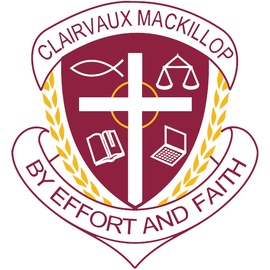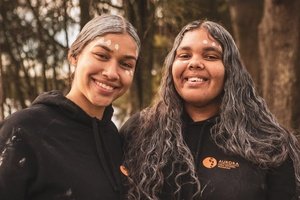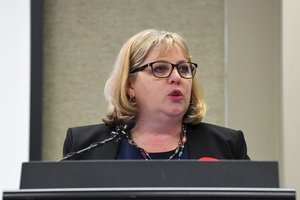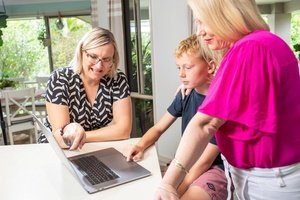One marker of success was to increase university attainment rates to 80 per cent – an immense goal given that the current tertiary attainment rate sits around 50 per cent, with the number of Australians enrolled in a bachelors degree decreasing in 2023.
The Report’s goal relies on an upswing of minority, disadvantaged, regional and remote, and Indigenous students enrolling in tertiary education, but here’s the problem: right now, the education system is not working for these young people in the way that it should.
This is what I’ve learnt as the CEO of Australia’s largest network of alternative schools, where many of our young people come from economically disadvantaged backgrounds, have experienced trauma and live with social-emotional disabilities.
One third of our students identify as First Nations, with particularly high proportions in Alice Springs, Mount Isa, Townsville, Rockhampton, Geraldton and South-East Queensland.
Our schools represent the very cohort highlighted in the Report, and every one of our 2100 young people are with us because they have disengaged from more traditional, mainstream school settings.
Our young people want to learn. They have big goals that they want to pursue – and often, tertiary education is a part of that. But we need to do better to support pathways into tertiary education for people who do not have the ease of location, finances or family support. Here are three things we should be considering as part of that.
1. A flexible education system
The most marginalised and disenfranchised students in the country are the most valuable, and an untapped resource of talent and resilience in our country. We need to be flexible in opening doors for them to succeed.
More innovative and responsive ways of measuring growth, performance and success is one approach, through exploring a broader set of criteria outside the ATAR for course entry. Current government consultation regarding a National Skills Passport is an exciting step forward, particularly for people who do not follow the set path towards tertiary education.
However, this initiative demands critical conversations about how we determine what experience and skills are ‘valid’ enough to be recognised. Critical conversations also need to be had about who will validate these claims for each individual. Schools and educators will, of course, be critical to this.
It's important to use a skills-based approach to learning, developing and recognising important people and thinking skills alongside the knowledge required for successful and sustainable work.
In reporting on the progress of each young person as it relates to these skills, we have seen an increase in learning confidence and interest in tertiary education – but this work cannot be limited to our schools if we are to see the kind of increase in tertiary education that the Report is striving for.
2. Building aspiration
Schools need to work with young people, families and communities in building learner identity, increasing awareness of opportunity and providing practical pathways to previously undreamt futures.
Many young people who live in remote areas or are disadvantaged have never considered university to be an option. These young people are the first person in their family or community to complete high school and are either unaware or do not believe there is potential to pursue the opportunities that lay ahead.
Strong relationships between tertiary education institutions and regional, remote, and alternative schools are critical. This will not only ignite conversations with young people who might not have considered these pathways, but it will also take steps towards building the trust that might have been eroded between these students and mainstream education providers.
These relationships could also be leveraged to create short-term immersion experiences and hybrid models of enrolment to enable young people to transition gradually between institutions.
The phrase ‘you cannot be what you cannot see’ rings true when we look at tertiary education, and there is a huge opportunity to illustrate what options are available after school – and the implications this would have on their lifelong learning and economic sustainability.
3. Support
While needs-based funding for university access is commendable, money is not the only barrier to entry for our young people.
The nation’s students experience a range of barriers to university entry, including confidence in their ability to participate in tertiary education, awareness of tertiary opportunities and trust in another education system that has previously not enabled them to progress and engage in relevant learning for their requirements.
To increase young people following tertiary pathways, we need to address these barriers – and at the heart of this is creating emotional safety.
When mental health and wellbeing is supported effectively, young people are engaged in their learning journey, they choose to attend school, and they feel comfortable communicating with teachers and staff if there is something preventing them from feeling safe and supported.
Employing as many youth workers as teachers in schools can be pivotally important, and help deliver a strengths-based, trauma-informed learning environment.
This investment in relationships has a transformative impact on many young people who can sometimes start their education thinking they can not learn.
There is merit in considering how this approach could be replicated to support tertiary education attainment, where additional or diverted funding might cover things like individual mentors, coaches, the creation of culturally-safe spaces or youth workers.
The release of the Australian Universities Accord Final Report marks a significant opportunity, not only for educators and the next generation of young people, but for our country as a whole.
Increasing participation in tertiary education means we will see a generation of intelligent, resilient, and talented cohort of young people entering into wider facets of the workforce and I can’t wait to see what talents they bring with them.
















